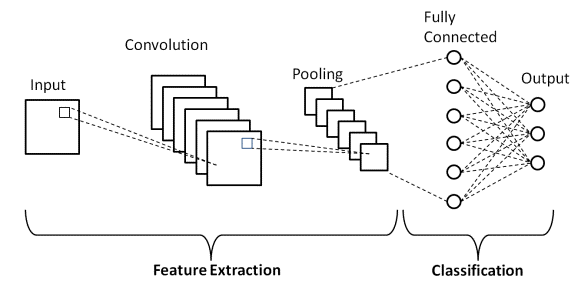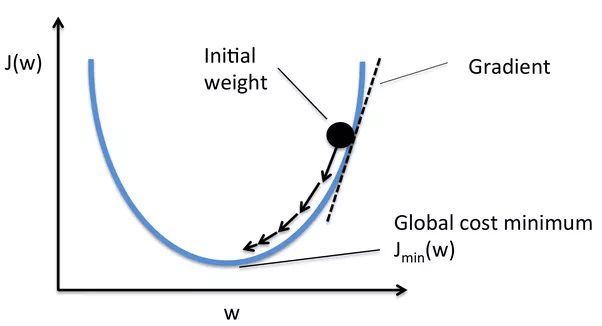
- Introduction to TensorFlow
- Understanding Neural Networks
- Model Architecture in TensorFlow
- Building a CNN
- Using Keras API
- Loss Functions and Optimizers
- Training and Validation
- TensorBoard for Visualization
- Conclusion
Introduction to TensorFlow
TensorFlow is a powerful open-source platform developed by Google for Machine Learning Training and deep learning tasks. It simplifies the process of building, training, and deploying machine learning models. TensorFlow supports a range of tasks, from simple linear regression to complex Deep learning with tensorFlow applications, Model architecture in tensorFlow, including computer vision, natural language processing, and time-series forecasting. Originally released in 2015, TensorFlow has become one of the most widely used frameworks in AI research and production environments. Its ability to operate on multiple platforms CPUs, GPUs, TPUs and integration with tools like TensorBoard and TensorFlow Lite make it a flexible and scalable tool.TensorFlow is an open-source end-to-end machine learning framework developed by Google. It provides a comprehensive ecosystem of tools, libraries, and community resources that enable researchers and developers to build and deploy machine learning models and Deep learning with tensorFlow models with ease. Designed for scalability and flexibility, TensorFlow supports a range of tasks from simple model prototyping to large-scale production deployments across various platforms, including desktops, servers, mobile devices, and edge systems. Its key features include support for deep neural networks, automatic differentiation, and distributed computing.TensorFlow is an open-source machine learning framework developed by Google that has become one of the most popular tools for building and deploying machine learning and deep learning models. Designed to be flexible and scalable, TensorFlow supports a wide range of tasks, from simple data processing to complex neural network architectures used in cutting-edge AI applications. At its core, TensorFlow allows developers to create computational graphs structures that represent mathematical operations and data flow. These graphs enable efficient execution on various hardware platforms, including CPUs, GPUs, and TPUs, making it suitable for both research and production environments. TensorFlow’s user-friendly Keras API simplifies the process of building models by providing high-level building blocks like layers, optimizers, and loss functions. This helps both beginners and experts quickly prototype and experiment with different architectures. Additionally, TensorFlow supports distributed training, allowing large-scale models to be trained faster across multiple devices or machines. Beyond model building, TensorFlow offers tools like TensorBoard for visualization, TensorFlow Lite for mobile deployment, and TensorFlow Extended (TFX) for production pipelines. Its extensive community and rich ecosystem make TensorFlow a comprehensive solution for developing intelligent applications across industries such as healthcare, finance, and robotics.
Ready to Get Certified in Machine Learning? Explore the Program Now Machine Learning Online Training Offered By ACTE Right Now!
Understanding Neural Networks
A neural network is a computational model inspired by the human brain. It consists of layers of interconnected nodes (neurons) that process input data and generate predictions. Neural networks are a fundamental component of modern , machine learning models ,Model architecture in tensorFlow inspired by the structure and function of the human brain. They consist of interconnected layers of nodes (neurons), where each connection has an associated weight that adjusts as the model learns. Neural networks excel at recognizing patterns and relationships in data, making them ideal for tasks such as image visualisation classification, Deep learning with tensorFlow, natural language processing, and speech recognition. Key types include feedforward networks, convolutional neural networks (CNNs), and recurrent neural networks (RNNs), each suited for different types of data and applications.Neural networks are computing systems inspired by the human brain’s structure and function. They consist of layers of interconnected nodes called neurons, where each connection carries a weight that adjusts during learning. Input data passes through these layers, with each neuron applying a mathematical transformation and activation function to detect patterns. Neural networks excel at solving complex problems like image recognition, natural language processing, and speech analysis by learning from data. Common types include feedforward networks, convolutional neural networks (CNNs) for images, and recurrent neural networks (RNNs) for sequential data. Their ability to model non-linear relationships makes them powerful tools in machine learning.
Model Architecture in TensorFlow
- Input Layer: Defines the shape and format of input data for the model.
- Hidden Layers: One or more layers of neurons that process inputs using activation functions (e.g., ReLU, sigmoid).
- Output Layer: Produces the final predictions; its size and activation depend on the task (e.g., softmax for classification).
- Sequential API: A linear stack of layers, ideal for simple feedforward models.
- Functional API: Allows for building complex models with shared layers, multiple inputs/outputs, and non-linear topologies.
- Custom Models with Subclassing: Enables full control by subclassing tf.keras.Model for advanced architectures.
- Layer Configuration: Each layer can be customized with parameters like number of units, Keras , activation functions, and initializers.
- Compilation: The model is compiled with an optimizer, loss function, and evaluation metrics before training.
- from tensorflow.keras.models import Sequential.
- from tensorflow.keras.layers import Conv2D, MaxPooling2D, Flatten, Dense.
- model = Sequential([
- Conv2D(32, (3,3), activation=’relu’, input_shape=(64, 64, 3)),
- MaxPooling2D(pool_size=(2,2)),
- Flatten(),
- Dense(128, activation=’relu’),
- Dense(10, activation=’softmax’)
- ])
- Conv2D: Extracts features using filters.
- MaxPooling2D: Reduces spatial dimensions.
- Flatten: Converts data into 1D vector.
- Dense: Fully connected layers for classification.
- model.compile(optimizer=’adam’, loss=’sparse_categorical_crossentropy’, metrics=[‘accuracy’])
- model.fit(x_train, y_train, epochs=10, validation_data=(x_val, y_val))
- User-friendly and intuitive.
- Modular and composable.
- Supports both Sequential and Functional APIs.
- Built-in support for training loops and callbacks.
- MSE (Mean Squared Error) – Regression.
- Binary Crossentropy – Binary Classification.
- Sparse Categorical Crossentropy – Multiclass Classification with integer labels.
- SGD: Stochastic Gradient Descent.
- Adam: Adaptive Moment Estimation, efficient for most tasks.
- RMSprop: Ideal for recurrent neural networks.
- Feedforward: Input passes through the network.
- Loss Calculation: Compare output to ground truth.
- Backpropagation: Adjust weights to reduce loss.
- Validation Set: Used to evaluate model performance on unseen data and avoid overfitting.
- model.fit(x_train, y_train, validation_split=0.2, epochs=20)
- Early Stopping: Stops training when the model stops improving on the validation set.
- from tensorflow.keras.callbacks import EarlyStopping
- early_stop = EarlyStopping(monitor=’val_loss’, patience=3)
- model.fit(x_train, y_train, validation_data=(x_val, y_val), callbacks=[early_stop])
- from tensorflow.keras.callbacks import TensorBoard
- tensorboard_callback = TensorBoard(log_dir=”./logs”)
- model.fit(x_train, y_train, epochs=10, callbacks=[tensorboard_callback])
- tensorboard –logdir=./logs
- Monitor loss and accuracy in real-time.
- Compare runs and hyperparameters.
- View model architecture and data flow.
To Explore Machine Learning in Depth, Check Out Our Comprehensive Machine Learning Online Training To Gain Insights From Our Experts!
Building a CNN (Convolutional Neural Network)
CNNs are specialized neural networks used for Machine Learning Training models, image and spatial data. They use convolutional layers to extract features from input images.

Components of a CNN:
CNNs are widely used in facial recognition, autonomous vehicles, and medical imaging.
Using Keras API
Keras is a high-level API built into TensorFlow that allows for quick prototyping and easy experimentation.
Example of compiling and training a model:
Features:
Looking to Master Machine Learning? Discover the Machine Learning Expert Masters Program Training Course Available at ACTE Now!
Loss Functions and Optimizers
Loss functions measure how far the model’s prediction is from the actual result. Optimizers update model parameters to minimize the loss.

Common Loss Functions:
Popular Optimizers:
Training and Validation
Training Process:
TensorBoard for Visualization
TensorBoard is a TensorFlow tool for visualizing training metrics, graph architectures, and profiling performance.
Usage:
To view TensorBoard:
Features:
Preparing for Machine Learning Job Interviews? Have a Look at Our Blog on Machine Learning Interview Questions and Answers To Ace Your Interview!
Conclusion
TensorFlow remains one of the most robust and flexible frameworks for Deep learning with tensorFlow development. It supports the complete ML lifecycle from designing neural networks to deploying models in production. Whether you’re building a CNN for image Visualization classification, experimenting with transfer Machine Learning Training models, or deploying mobile models with TensorFlow Lite, this framework has you covered. With its intuitive Keras API, rich visualization tools like TensorBoard, and scalable Model architecture in tensorFlow , TensorFlow is a must-learn for any aspiring ML or AI practitioner.




